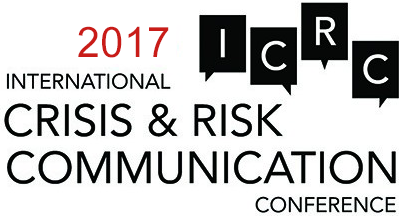
Management Consultant
Kellie Cummings Consulting
United States
Kellie Cummings is a management consultant and communications expert specializing in practices that fortify trust during a crisis. She is accredited by the International Association of Business Communicators (IABC) and writes for: the Huffington Post, IABC, the American Society of Training and Development, American Banker, and Simply Communicate.
Kellie received the Platinum Marcom Award for her communication strategy during the financial crisis while serving as an associate editorial director at a global financial services firm. During the crisis, Kellie realized the company needed a more human understanding of customers in order to communicate effectively with them.
Through a process called “mindset segmentation,” she and her team created tools that establish an emotional understanding of customers and therefore enable employees to empathize with customers during a period of extreme stress. Her innovative ideas were widely embraced in the organization, and received praise from senior leaders, such as:“[This] process facilitates a structured approach to considering a communication according to the audience…and empowers more targeted and meaningful collaboration.”
Today, Kellie shares these practices through articles, speaking engagements, and her consulting practice. Currently, she is writing a book about building trust during times of change, based on her experiences during the financial crisis. Many of her strategies and published articles can be found on her website: www.kelliecummings.com. You can also follow her on Twitter @kellcummings.
2014
Breakout Session: Fortifying Trust in a Crisis: Lessons from Financial Crisis, the BP Oil Spill, Hurricane Sandy and more.
This presentation is a first-hand experiential report that includes original research and proprietary tools for developing a more human understanding of customers.
It’s over five years since the global financial crisis, however, communications professionals are still learning from those remarkable events. At the time, Cummings led a team of senior writers at a global financial services firm. When the crisis hit, they suddenly needed to understand their customers’ perception of those upsetting events. To communicate empathetically with traumatized investors, it was essential to understand their emotional needs.
Mindset segmentation
At the time of the crisis, the company’s sole customer profiles were derived from marketing segmentation, which views people narrowly according to their likelihood to purchase a company’s products.
The writing team was steeped in behavioral economics and understood that fear affects how people interpret information. In fact, Gallup estimates that emotions may account for as much as 70 percent of all economic decision-making.
In early 2009, Cummings and her team set out to develop a new type of customer segmentation: one that distinguished people based on their emotional and rational needs. By establishing a new set of attributes that described people, not consumers, the team created profiles that illuminated customers’ fears and desires. These mindsets enabled the team to communicate empathetically with customers and to sustain their trust during periods of extreme stress.
Sustaining trust in a crisis
Today, many of the most significant crises stem from issues that are beyond the control of any single business or government. A combination of natural disasters, terrorism events, and economic shocks challenge traditional crisis thinking.
While traditional crisis planning focused on mitigating legal, financial, and reputational risks, massive social crises require a new form of leadership: one that assumes responsibility regardless of liability or culpability. To fortify trust with stakeholders during a social crisis, businesses must develop empathy as a core competency, particularly in crisis management.
Cummings’ framework for fortifying trust in a crisis comprises six dimensions that enable businesses to demonstrate empathy and integrity during a massive crisis. These include: a model for planning how to respond to a social crisis; a guide to ethical leadership practices; internal communication strategies that provide continuity and support; spokesperson training to project confidence and compassion; trust-building organizational practices during a crisis; and essential community support and engagement practices during a recovery. At the core of these practices lies mindset segmentation, which enables human-centered crisis planning and organizational empathy.
Breakout Session: Acts of Goodwill in a Crisis: An Interactive Discussion About What Motivates Businesses to Help Others
Businesses have long contributed to response efforts in the aftermath of massive natural disasters and humanitarian crises. However, the shape and size of corporate giving has evolved significantly in the past decade. Several of these emergent trends, particularly in the United States, merit further examination.
First, massive humanitarian crises now occur in places where Americans live and work. While these events once took place millions of miles away, today they’ve become part of the American experience.
Second, corporate giving has evolved from strictly cash donations toward engagement. Companies large and small are rolling up their sleeves to address urgent on-the-ground problems. And third, during massive humanitarian events, business and government have begun working collaboratively to save lives and restore stability.
Many assumptions are made regarding the growing role of corporate engagement in disaster response. Some assert that companies now understand they have a responsibility to society. More pragmatic voices argue that companies care about these issues because their customers do. And, further down the spectrum of pragmatism, others stress the threat of regulatory pressures as the real motivator.
In recent years, business response during a disaster has set new precedents in customer care. For example, during Hurricane Sandy, several national banks proactively notified customers of grace periods of loan payments before the storm made landfall. While it’s not unusual for banks to forgive certain fees amidst highly unusual circumstances, it is unusual for several national banks to contact all of their customers in a geographic region and proactively extend fee waivers.
After the storm, AT&T and Verizon deployed mobile power stations into devastated areas to help people charge cell phones or simply access the Internet. At Google, the company’s crisis response team built interactive crisis maps before the storm hit. In addition to creating a map of the Atlantic coast, Google’s programmers developed a detailed map of New York City that highlighted evacuation zones, anticipated flood levels, and evacuation centers.
While these actions on the part of business are refreshing, and in some cases lifesaving, it’s important to study the motivations behind these trends. This interactive discussion will consider a spectrum of influences and it will challenge preconceived notions. Please come prepared to question, challenge, and participate in this interactive session.
2014 Presentation: Acts of Goodwill in a Crisis
2014 Presentation: Fortifying Trust in a Crisis


